Railway Servants' Orphanage / St Christopher's Home, Derby, Derbyshire
The Railway Servants' Orphanage was founded on August 5th, 1874, at a meeting in Derby's Grand Jury Room called by Mr S Wills of Hull. The idea for the institution had originated with the Railway Servants' Society in light of the hundreds of railway servants that died each year in the course of their employment, and many of whose families then ended up in the workhouse. Derby had been proposed as a location for the establishment because of its central position and its large railway works. The meeting commended the scheme and elected a Provisional Committee to pursue the scheme. Fund-raising began in earnest, with subscriptions and donations including one of £100 from Sir Titus Salt who became a patron of the institution. Much support for the institution was also given the local M.P., Michael Thomas Bass.
By December of 1874, the Committee had taken two houses in the London Road, at the bottom of Bradshaw Street, in which thirty children could be received. A matron with experience of a similar institution was placed in charge and the first eleven inmates entered on January 1st, 1875.
More space was soon needed and in 1877 the home transferred to a large property at 55 Ashbourne Road, Derby which was initially adapted to accommodate 36 children. Over the next ten years, additional land was acquired and substantial alterations and extensions were made to the buildings under the supervision of the Midland Railway's architect A.A. Langley. A major phase of the work, including a new chateau-style frontage, was officially opened on 20th July 1887 by the Marquis of Hartington, M.P. The establishment could then house 300 children.
The location and layout of the home are shown on the 1901 map below.
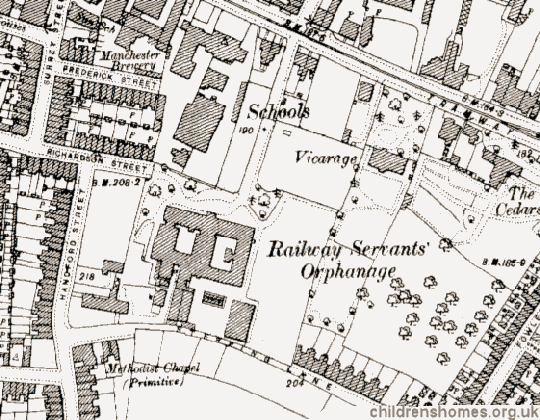
Railway Servants' Orphanage site, Derby, c.1901.
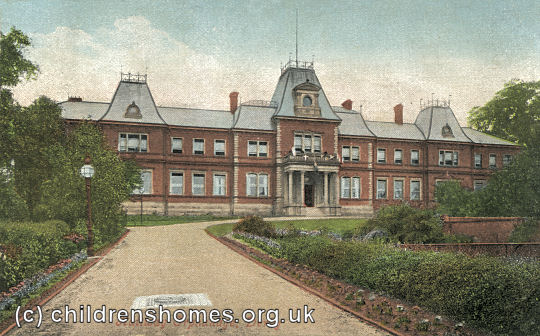
Railway Servants' Orphanage from the north, Derby, c.1900. © Peter Higginbotham
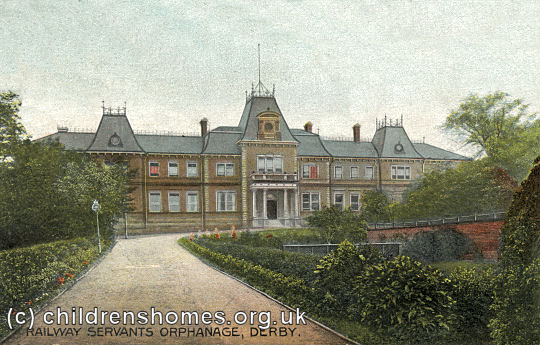
Railway Servants' Orphanage from the north, Derby, c.1906. © Peter Higginbotham
Children were admitted from railway companies all over Great Britain and Ireland. They had to be between the ages of 6 and 12 at entry and leave when they were 15. If there were more applicants than places available then admission was decided by a ballot of the subscribers. In 1927, however, it was noted that no ballot had been required in the previous forty years. In 1881, admission to the orphanage was extended to the children of railway workers who had died of natural causes and, in 1927, to those whose mothers had died or were incapacitated. Children in poor health were not allowed entry but instead supported at home or at a special school.
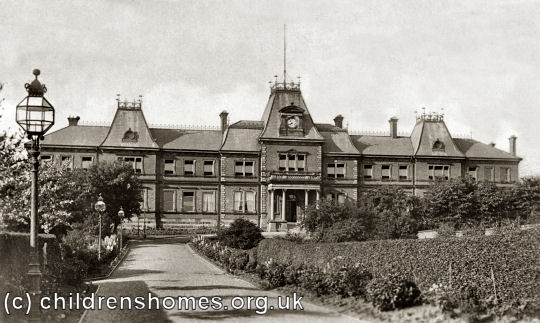
Railway Servants' Orphanage from the north, Derby, c.1912. © Peter Higginbotham
The main building was divided into a boys' half (on the left as you came up the entrance driveway) and a girls' half (on the right).
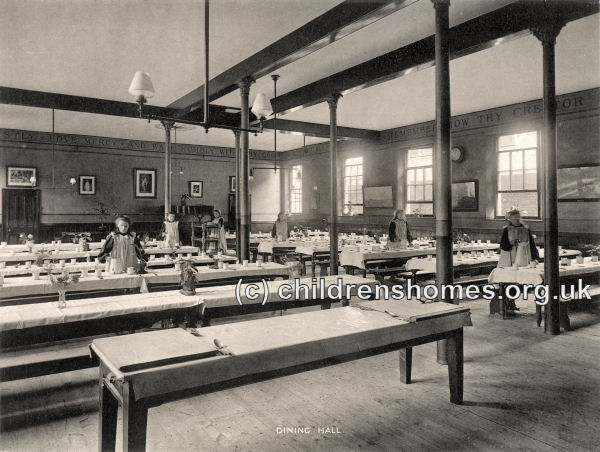
Dining Hall at Railway Servants' Orphanage, Derby, c.1914. © Peter Higginbotham
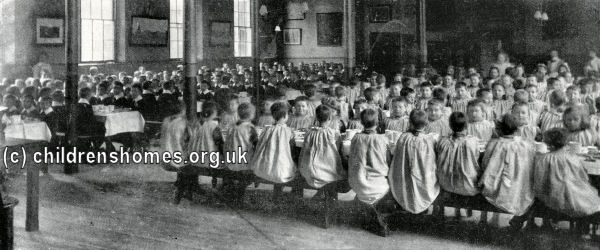
Dining Hall at Railway Servants' Orphanage, Derby, c.1909. © Peter Higginbotham
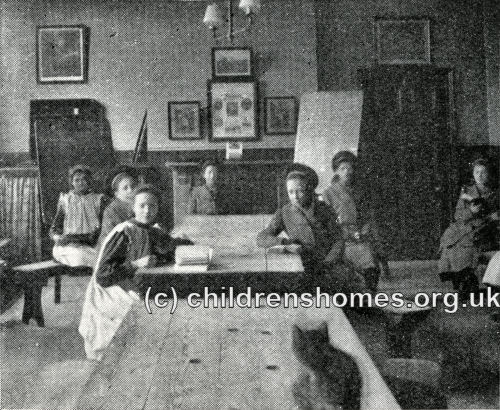
Girls' dayroom at Railway Servants' Orphanage, Derby, c.1909. © Peter Higginbotham

Boys' dormitory at Railway Servants' Orphanage, Derby, c.1909. © Peter Higginbotham
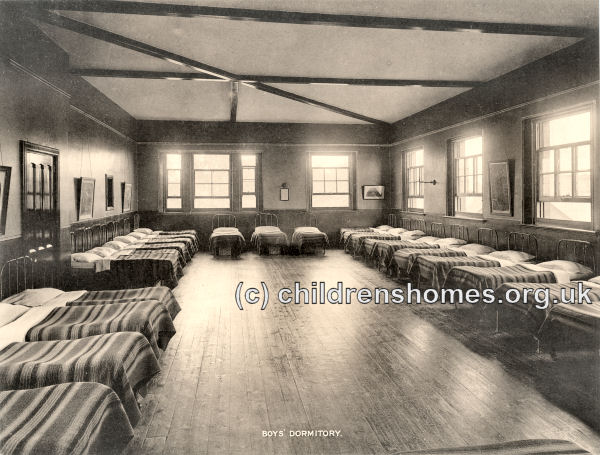
Boys' dormitory at Railway Servants' Orphanage, Derby, c.1914. © Peter Higginbotham
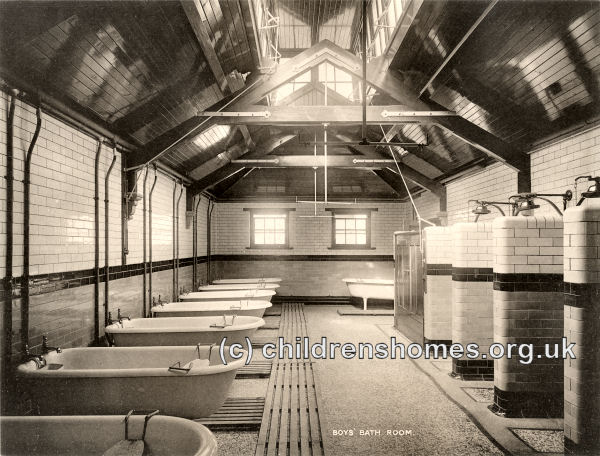
Boys' bathroom at Railway Servants' Orphanage, Derby, c.1914. © Peter Higginbotham
The children attended local schools, the boys continuing to do so until they left the Orphanage. From the age of 13, however, the girls were kept at home and given a training in domestic work. By the time they left, they were expected to know how to make their own dresses and other articles of clothing, to wash, iron and knit, and to cook a plain dinner. The children were also taught singing and received instruction in scriptural knowledge.
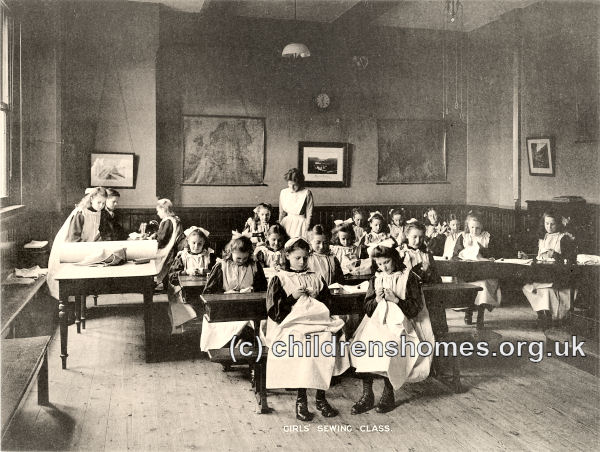
Girls sewing at Railway Servants' Orphanage, Derby, c.1914. © Peter Higginbotham
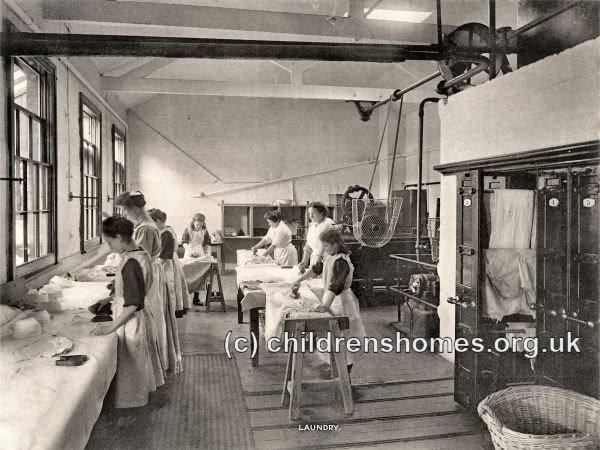
Girls in laundry at Railway Servants' Orphanage, Derby, c.1914. © Peter Higginbotham
All the children received physical instruction in free movements, wand drill, club drill, and exercises on the apparatus in the gymnasium. Both sexes were taught to swim. The boys were also taught either carpentry, shoe-mending or kitchen gardening, and the children kept small allotment gardens. Most of the boys went on to enter the railway service, while the girls became domestic servants, dress-makers, shop assistants of teachers
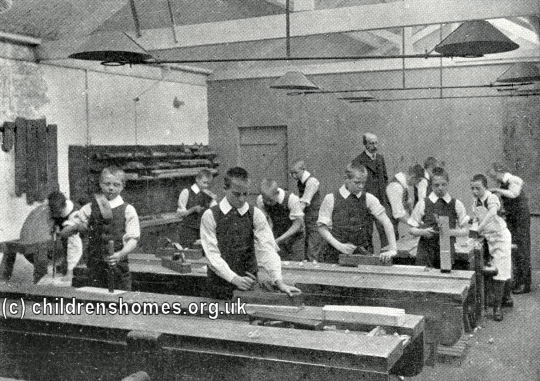
Carpentry workshop at Railway Servants' Orphanage, Derby, c.1909. © Peter Higginbotham
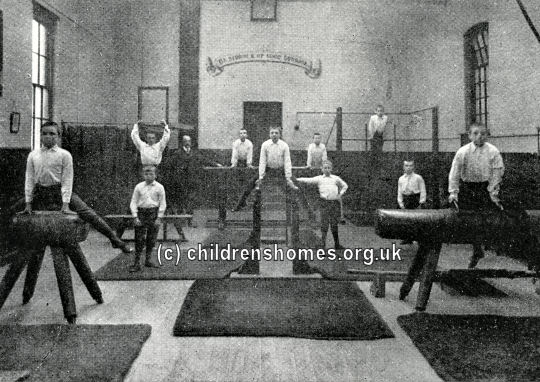
Gymnasium at Railway Servants' Orphanage, Derby, c.1909. © Peter Higginbotham
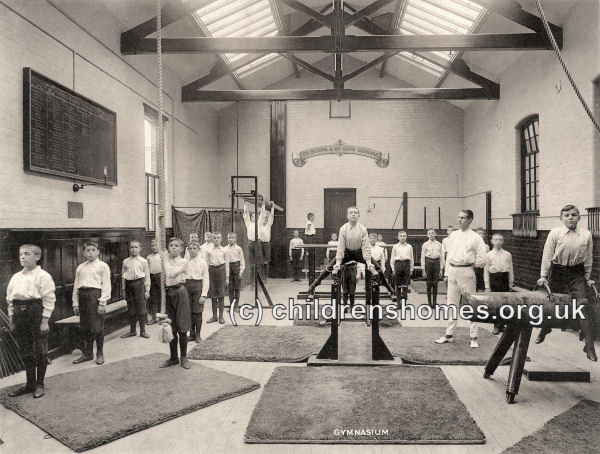
Gymnasium at Railway Servants' Orphanage, Derby, c.1914. © Peter Higginbotham
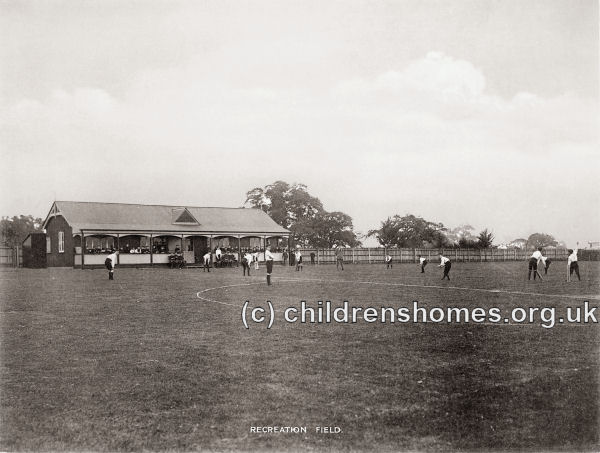
Boys playing cricket at Railway Servants' Orphanage, Derby, c.1914. © Peter Higginbotham
Children who were ill were treated in the home's sanatorium.
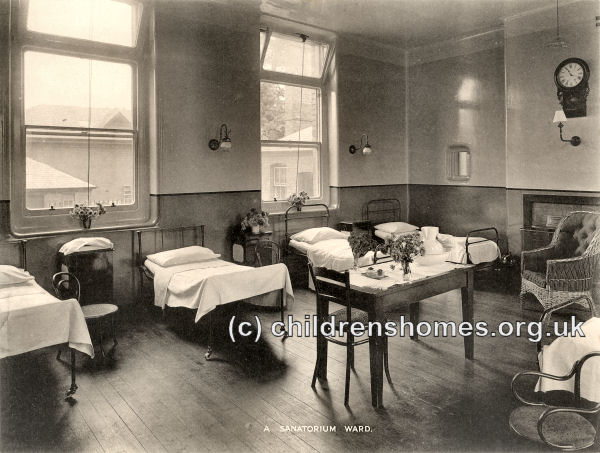
Sanatorium at Railway Servants' Orphanage, Derby, c.1914. © Peter Higginbotham
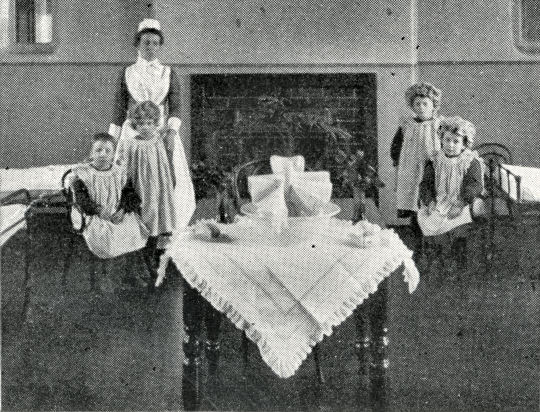
Girls in the sanatorium at Railway Servants' Orphanage, Derby, c.1909. © Peter Higginbotham
The children were expected to write home once a month. They could be visited by friends between 10 and 6 on any day except Friday or Sunday, or from 2 to 6 on Saturday afternoons. Each child's mother of guardian was required to make arrangements for them to go home for a month in July or August. One former inmate of the home from 1915 to 1924 recalled having learned French there and how to darn a sock as well as lots of sports.At Easter, however, the children received just one boiled egg.
In 1948, the orphanage was renamed St Christopher's Railway Home. Following a decline in demand for places at the home in the 1950s and 60s, the main building was demolished in 1977 and replaced by two smaller houses. In 1983, one of these became a home for the elderly. When the home closed ten years later, no children remained.
The site is now occupied by sports pitches.
Records
Note: many repositories impose a closure period of up to 100 years for records identifying individuals. Before travelling a long distance, always check that the records you want to consult will be available.
- Derbyshire Record Office, New Street, Matlock, Derbyshire. Holdings include: Admission and discharge registers (1875-1926); Admission cards (pre-1900); Annual reports (1875-1990); Building-related documents and plans (1887-1990); Committee minutes (1882-1991); Old Pupils' Association minutes etc. (1935-1992); Various documents relating to the management of the orphanage; etc..
- Find My Past has Admission and discharge registers (1875-1912).
Census
Bibliography
- Musson, Barbara Blandford A Real Railway Child : a local history of the birth, the life and the demise of the Railway Servants' Orphanage, Derby, and an autobiographical account of life in the Home in the 1940s and 1950s (1996, University of Derby)
Links
- Care of St Christopher's film about the home DVD included on this DVD set.
Except where indicated, this page () © Peter Higginbotham. Contents may not be reproduced without permission.


